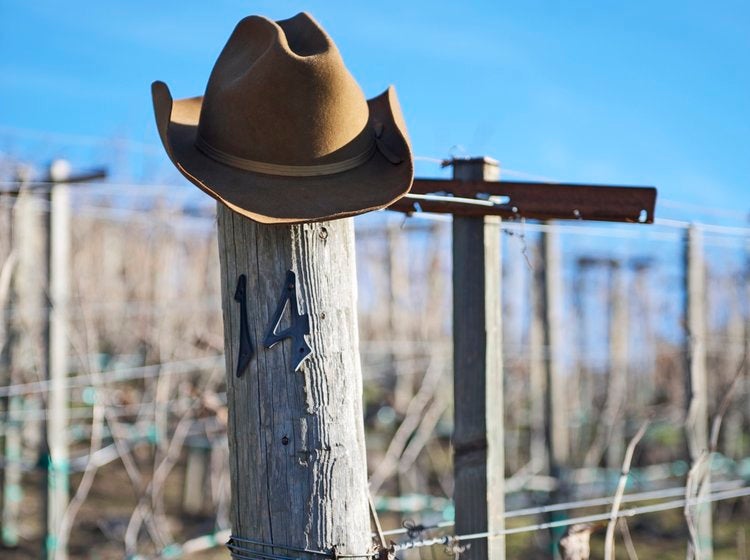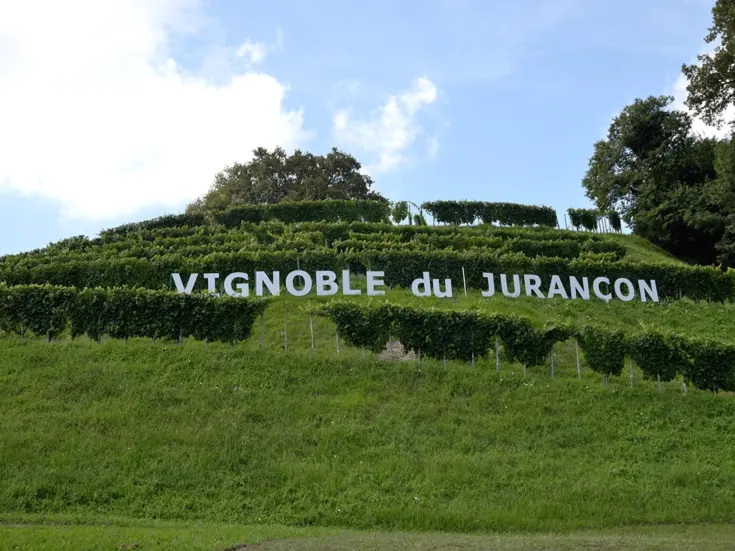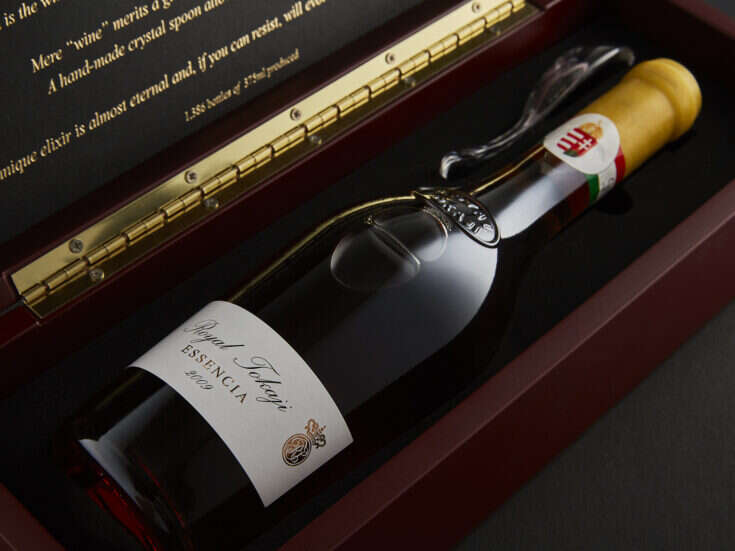
A book with a title like The New California Wine is an exercise strikingly reminiscent of Saul Steinberg’s famous 1976 New Yorker cover, colloquially titled “A New Yorker’s View of the World.” So much depends on one’s perspective. In Steinberg’s illustration, the two bustling blocks from Ninth Avenue to the Hudson River take up half the space, beyond which lie a few small patches of non-descript terrain such as the rest of the country, the Pacific Ocean, and Russia. Someone other than Jon Bonné writing a book on California wine would likely take up half the space with Napa Valley, with large-production standbys like Opus One and small-production “cult” wines like Screaming Eagle looming largest in the foreground. Beyond that you would see Sonoma and perhaps a few small patches acknowledging some of the farther-flung appellations. Or maybe that is the way a book on California wine would have looked in the late 1990s or early 2000s. But now there really is a “new” California wine, and Jon Bonné has the perfect perspective to cover it.
“I hear you hate California wine,” the book begins, quoting a remark made to Bonné by an unnamed winery’s PR flak. Bonné, who moved to California in 2006 to edit the wine pages of the San Francisco Chronicle, introduces himself as an outsider who does not, in fact, hate California wine, but has found much to criticize about it. He developed his taste for wine drinking Old World classics. The history of modern California wine began with attempts to emulate that stuff, but eventually copying gave way to caricature.
The machine in the mind
When Matt Kramer wrote his book on California wine in 1992, he described the state’s vintners as enthralled by what he called “the machine in the mind,” the idea that the job of a winemaker is to bend and manipulate what nature produces to meet a particular vision – a vision that was already then becoming increasingly untethered to any traditional norms of balance and proportion. Bonné’s term for the result is Big Flavor, borne of a “love of ripeness [which] necessitates sugar numbers that have little in common with viticultural traditions elsewhere.” The defining moment for Big Flavor, in Bonné’s account, occurred in 2000 when Robert Parker excoriated a lineup from Robert Mondavi as “indifferent,” “strippedout,” and “vapid,” “going against what Mother Nature has given California, the ability to produce wines of exceptional ripeness and gorgeously pure, intense flavors.” The Mondavi wines, instead, “were too subtle and restrained” – terms Parker intended as pejoratives. Meanwhile, wineries that pushed the limits of ripeness and concentration were rewarded with big scores — a style, notes Bonné, easily achievable by picking raisined grapes in the neighborhood of 30 brix and adjusting acid, alcohol, and water levels in the winery so that the result “is not so much the artistry of the winemaker as the ministrations of a technocrat.”
But lately the formula of working the machines (both metaphorical and literal) and selling the wine in big, heavy bottles to eager score-chasers lined up behind the velvet rope of a mailing list doesn’t seem to inspire the excitement that it once did. In some sense, the “new” California is a throwback to the old California. Keep rewinding past the ’90s back to the ’60s and ’70s, and a survey of “the new California wine” then might have featured pioneers like the Mondavis, Calera’s Josh Jensen, and Ridge’s Paul Draper aiming to compete with the best of the Old World. Yet each of them figures prominently in Bonné’s book, too. It’s not that they are doing anything new (except perhaps Tim Mondavi, who left the family winery and now makes what Bonné admits is “a ripe creature, often topping 15 percent alcohol” at his Continuum Estate). Rather, the pendulum has swung back to the point where drinkers are again receptive to what veterans like Jensen and Draper have been doing all along.
Some newcomers to the scene highlighted in Bonné’s book are carrying on that legacy; others are attempting something altogether different, even offbeat – planting unabashedly non-commercial grape varieties like Trousseau or Ribolla Gialla; scouting out the most marginal climates and vine-stressing soils; picking at natural alcohol levels in the 11 or 12 percent range; aiming for minimal intervention in the cellar. It is the very opposite of the machine in the mind; the scale is generally small, and the vision is grounded in place rather than technique. “We want wines to taste like where they come from,” Bonné quotes John Rankin, the domestic wine buyer at New York’s Chambers Street Wines, as saying “I think for a long time California did a lot of things to obscure that, and now people are trying to take the makeup off.” That Chambers Street Wines – champion of Muscadet and Morgon – even has a dedicated domestic buyer is itself something of a watershed event for California wine.
Urbane perspective
In addition to abandoning the hitherto dominant model of how California wines are made, these new names have also scrapped the old model of how they are popularized and sold. They do not rely on the palate and power of a single critic to bestow a high score and create demand. Bonné is one of just a handful of print columnists who have kept their ears close enough to the ground to cover their emergence. Most of them instead rely on decentralized word-of mouth on Internet blogs and bulletin boards, or hand-sell efforts by specialty retailers, to make a name for themselves. Back in 2010, Hardy Wallace (something of a social-media maven, in addition to being the maker of sui generis Sémillon and Mourvedre under the Dirty & Rowdy Family Winery label), called the Arnot-Roberts winery “[m]y current favorite social media example,” despite having no presence itself on Facebook, Twitter, YouTube, or any other trendy outlet of self-promotion. “So how,” Wallace wrote, “is a tiny, two person winery with zero social media presence one of my favorite social media examples[?] – They are making amazing, distinct wines that other people talk about.” And so Arnot-Roberts sells out its production every year without hiring a publicist or praying for a 95-point review.
Bonné anointed Arnot-Roberts’s Duncan Arnot Meyers and Nathan Lee Roberts his 2013 Winemakers of the Year in his Chronicle column, calling them emblematic of the “new generation of winemakers who share a kinship with the pioneers of the 1970s, a similarly urbane perspective that’s very different from recent years’ inward gaze.” “There’s a 20-year chunk of California history,” Meyers told Bonné, “where the majority of players in it were in it to hit buttons. Now we’re swinging back. […] This is one of the most exciting times in the history of California wine. Five years ago, would we have been talking about Mourvèdre from the foothills or Trousseau from the coast?”
Among the other notable exponents of this new generation to feature in The New California Wine are Hank Beckmeyer’s La Clarine Farm, whose minimal-intervention wines include the bright, peppery Sumu Kaw Syrah and an estate-grown field blend; Morgan Twain-Peterson’s Bedrock Wine Co., giving new life to some of California’s oldest vine material in a lineup of Syrahs, Zinfandels, and old-style field blends; former Renaissance winemaker Gideon Bienstock’s personal Clos Saron label, which is getting famous for its Sierra Foothills Pinot Noirs but may have stumbled on a surprise signature wine with a compelling ancient-vine Cinsault whimsically labeled “Out of the Blue”; Kevin Harvey’s Rhys Vineyards, whose rocky, massale-planted Santa Cruz Mountain vineyards produce tiny yields of whole-cluster-fermented Pinot Noir rivaling some of the most elite Burgundy grand crus; and many others working in an array of styles and grape varieties. Old-timers like Jensen, Draper, Qupé’s Bob Lindquist, and Littorai’s Ted Lemon (depicted on the book’s cover), as well as classic wineries like Mayacamas and Mount Eden Vineyards, who were aiming for a new kind of California wine before it became cool, are also given their due, along with some mildly surprising inclusions like Turley Wine Cellars, which prove that Bonné’s style tolerance is more catholic than the publicist on page one gave him credit for.

©2013 Stag’s Leap Wine Cellars, Napa, CA 94558
In 1964, the historian Samuel Eliot Morison wrote of California in his Oxford History of the American People: “California The very name connoted mystery and romance. It had been given to a mythical kingdom ‘near the terrestrial paradise,’ in a Spanish novel of chivalry written in the lifetime of Columbus. President Polk did not read novels, but he wanted California much as Don Quixote wooed Dulcinea, without ever having seen her, and knowing very little about her. The future Golden State, with forests of giant pines and sequoias, broad valleys suited for wheat and narrow vales where the vine flourishes, extensive grazing grounds, mountains abounding in superb scenery and mineral wealth, was then a Mexican province, ripe for the plucking.”
It has been quite some time since California wine connoted mystery and romance. Those vales where the vine flourishes all too easily turned out perfectly suitable either for industrial-scale production or as a blank canvas on which the “machine in the mind” could impose the most vulgar of visions. What makes the rise of the new California so exciting is that it represents not only a triumph of better taste but the rediscovery of a pioneering spirit that is redrawing the map of California wine – for those who are willing to indulge a new perspective.







